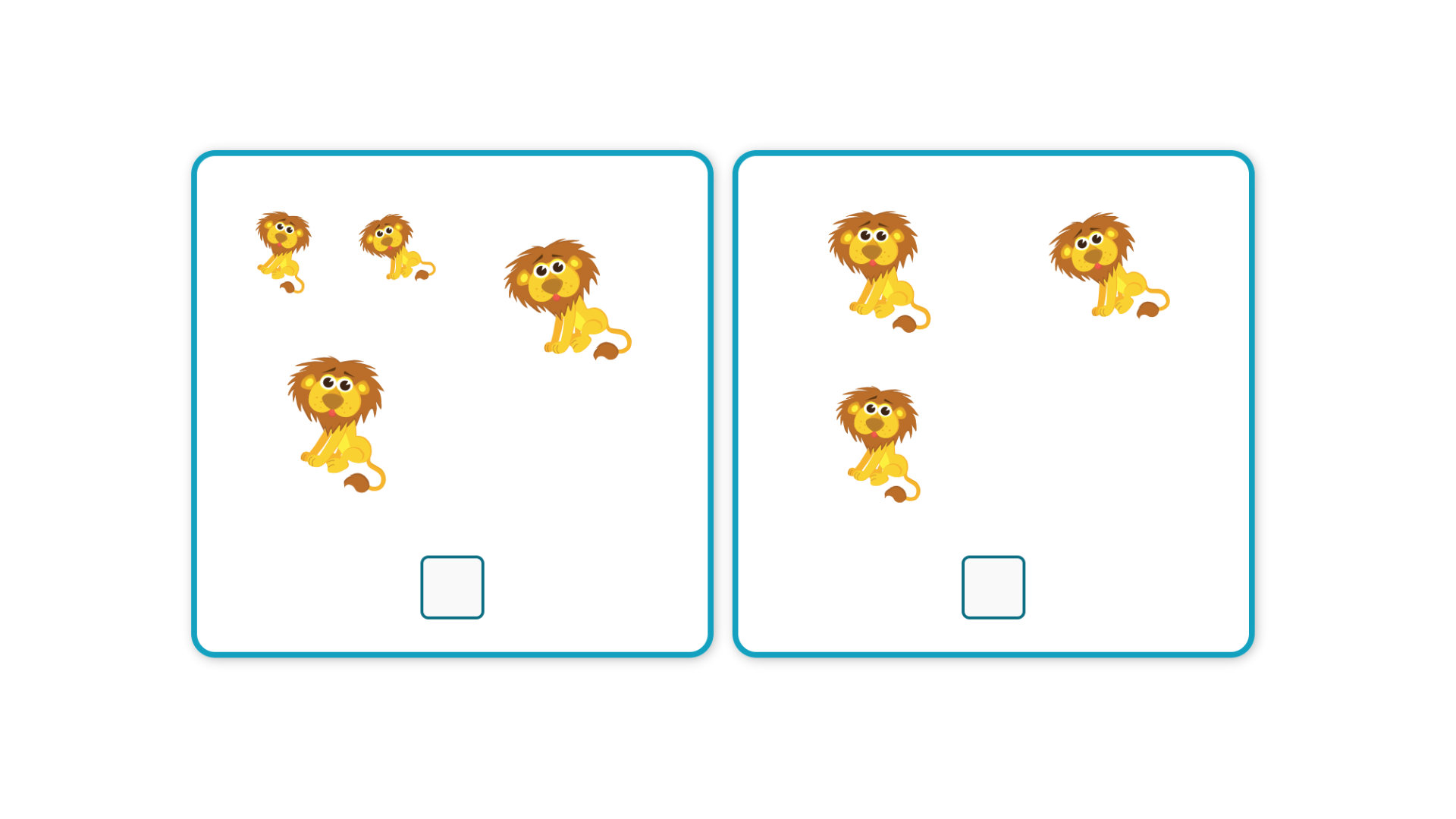Tips on how to use this exercise at home and at school.
Early math concepts
In this exercise, the child passively determines relationships between objects such as: equally, more and less. This exercise is one of the most basic in comparison and helps to understand the fundamentals for comparing quantities.

Why is this exercise important?
When comparing quantities, the child uses the matching skills they already know. By forming pairs, the child forms an idea and starts to understand the relationships between numbers and concepts like equal, less and more.
In the beginning, the child perceives all situations equally. But they can make a connection if, for example, they can't give candies to their friends, because they realize they have fewer candies than friends and therefore there are more friends than candies. This correlation is the basis for later understanding of the relationships between numbers.
Who is this exercise suitable for?
It generally belongs in preschool or early school play. In addition to the concepts of number ideas, and rational assumptions, it also develops language skills at the same time.
This exercise is part of the lesson plan for comparison.
Methodological recommendations
Either read aloud the instructions, play them from the app or let the child read them by themselves.
The child is shown two or three groups of pictures and is instructed to decide where there are the same number of objects, more or less. If the child has difficulty with these situations, match the pictures together and find the answer by comparing them (e.g. For each sock in the first group, match the sock in the second group to make a pair. If we can no longer find a sock in the second group to make a pair, it means there are more socks in the first group than in the second).
We are asking for the number of objects, so we are not interested in their size, location, or rotation. It leads to an abstract understanding of a number that expresses only a number.
In the exercise setup, it is possible to select instructions only for single quantities, i.e. only for: the same, more, or random (both options).
Tips for similar activities outside the app
This type of practice can be implemented at home by having the child assign a toothbrush, cutlery or cup to each person in the household. Then, you can create pairs of objects for Matt and John, Bob and Jane, Patricia and Oliver, Emily and Sebastian and so on.
Next, we can compare using dice. You and the child roll the dice and compare: Who got the same, more or less points?
More ideas for matching activities: